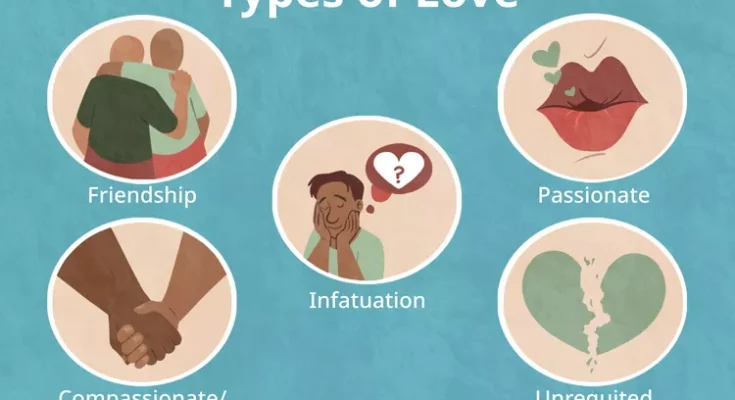Table of Contents
- What Is Love?
- How Do You Know You’re in Love?
- Types of Love
- The Science of Love: Biology vs. Culture
- How to Express Love
- The Psychological Impact of Love
- How to Nurture and Grow Love
- Difficult Emotions Connected to Love
- A Brief History of Love
- Love and the Parasympathetic Nervous System
What Is Love?
Love is often described as one of the most profound human experiences. It’s more than just an emotion—it’s a blend of feelings, behaviors, and biological impulses that drive intimacy, connection, and care. At its core, love involves affection, attraction, emotional closeness, protectiveness, and trust.
According to psychologist and biologist Enrique Burunat, love can be understood as a basic physiological drive, much like hunger, sleep, or thirst. It is both emotional and essential, influencing every aspect of our lives.
Despite being widely explored through literature, art, and music, love remains one of psychology’s most complex and least understood topics.
How Do You Know You’re in Love?
Psychologists distinguish between simply liking someone and genuinely loving them. According to Zick Rubin, romantic love consists of three foundational elements:
- Attachment – A deep desire for connection, approval, and physical closeness
- Caring – Placing the other person’s happiness and needs equal to or above your own
- Intimacy – Willingness to share personal thoughts, feelings, and experiences
Rubin developed tools like the Scales of Liking and Loving to help measure these components and differentiate casual affection from true emotional connection.
Types of Love
Love comes in many forms. Here are several types commonly recognized by psychologists:
- Friendship – Affection and emotional closeness without romantic attraction
- Infatuation – Intense desire and attraction, often seen early in relationships
- Passionate Love – Emotional intensity and longing, often idealizing the other person
- Companionate Love – Stable, long-term affection based on trust and commitment
- Unrequited Love – Loving someone who doesn’t return those feelings
Sternberg’s Triangular Theory of Love
Psychologist Robert Sternberg proposed that love has three components:
- Intimacy
- Passion
- Commitment
These combine to form different types of love:
| Type of Love | Components |
|---|---|
| Friendship | Intimacy |
| Infatuation | Passion |
| Empty Love | Commitment |
| Romantic Love | Intimacy + Passion |
| Companionate Love | Intimacy + Commitment |
| Fatuous Love | Passion + Commitment |
| Consummate Love | Intimacy + Passion + Commitment |
The Science of Love: Is It Biological or Cultural?
Love is influenced by both biology and culture.
- Biological: Hormones like oxytocin and dopamine play a key role in feelings of attachment and pleasure.
- Cultural: How we interpret and express love is shaped by social norms, traditions, and personal beliefs.
Romantic love is a universal phenomenon, found across all cultures—supporting its biological roots. However, the ways people experience and communicate love vary widely due to cultural influence.
How to Express Love
Love can be expressed in countless ways, depending on the relationship and individual needs. Here are some common ways to show love:
- Be emotionally available and open
- Communicate with kindness and honesty
- Show physical and verbal affection
- Spend quality time together
- Support your partner’s goals and dreams
- Apologize sincerely when needed
- Offer forgiveness and grace
- Celebrate their strengths and achievements
Above all, make your love unconditional—not based on what someone does, but on who they are.
The Psychological Impact of Love
Healthy, loving relationships have a powerful impact on both mental and physical health. Research shows that love and emotional connection are linked to:
- Lower risk of cardiovascular disease
- Better recovery after illness or surgery
- Stronger immune function
- Longer life expectancy
- Lower levels of anxiety and depression
- Reduced stress and cortisol levels
Love isn’t just good for the heart—it’s good for the whole person.
How to Nurture and Grow Love
Love, like anything valuable, requires intention and care. Here are some proven ways to strengthen your emotional connections:
- Practice loving-kindness meditation (LKM): A mindfulness practice that enhances compassion and empathy.
- Communicate effectively: Be open about your feelings and listen to your partner’s needs.
- Resolve conflicts respectfully: Don’t avoid disagreements—work through them together in a healthy way.
Lasting love thrives on trust, honesty, shared values, and mutual support.
Difficult Emotions Connected to Love
While love often brings joy, it can also lead to emotional challenges, such as:
- Jealousy
- Insecurity
- Obsession
- Sadness or heartbreak
- Possessiveness
- Anxiety
- Depression
It’s normal to experience a range of emotions in relationships. However, if negative feelings become overwhelming or persistent, seeking help from a mental health professional or couples therapist can make a significant difference.
A Brief History of Love
For centuries, love was the domain of poets and philosophers, not scientists. Sigmund Freud noted that artists had long explored love’s mysteries, while psychology had only just begun to study it seriously.
In the 1970s, researchers investigating love faced criticism, even ridicule. But today, love is recognized as a critical factor in both childhood development and adult mental health, with entire fields dedicated to studying its effects and origins.
Love and the Parasympathetic Nervous System
Love isn’t just emotional—it’s physiological. The parasympathetic nervous system, which controls rest and relaxation, is activated by feelings of love and safety.
When you’re in a healthy, loving relationship, your body:
- Slows the heart rate
- Reduces stress hormones
- Promotes healing and balance
- Enhances emotional stability
In short, love calms the body and nurtures the soul.


